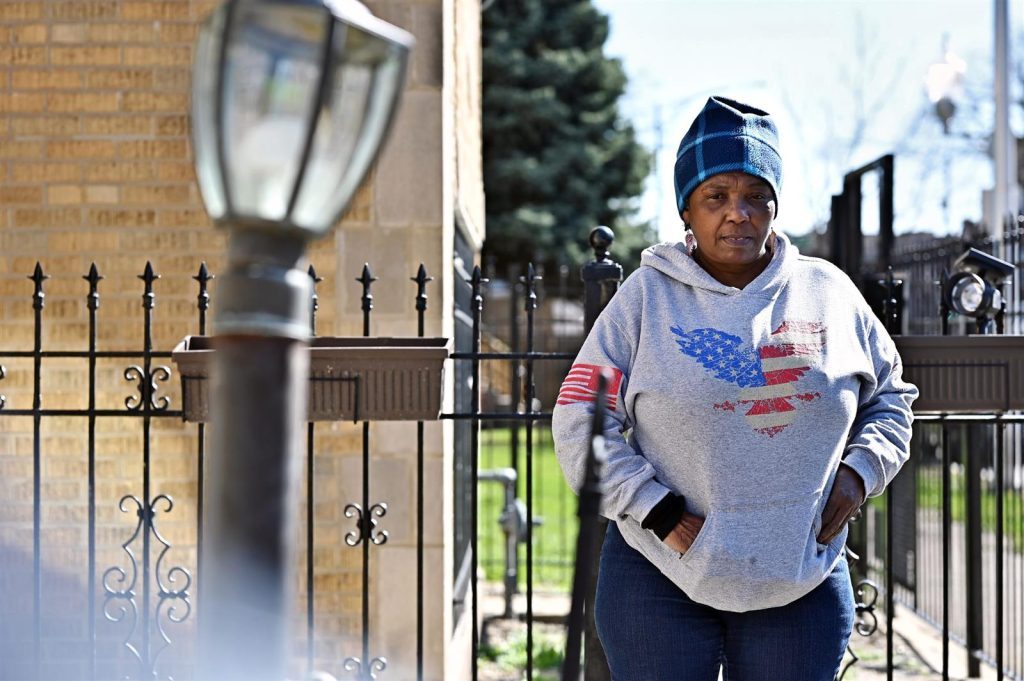
Flooding is Illinois’ Most Threatening Natural Disaster. Are We Prepared?
This story was originally published by the Illinois Answers Project.
The electricity in Mary Buchanan’s home in West Garfield Park was not working – again.
The outage lasted four days, starting just after a crew dug up her front lawn to install a check valve in late March, in order to stop waste water from pouring into her basement. She told herself this $12,000 construction would be worth it if it means no more flooding.
Last summer, as historic rain pelted down on Cook County, Buchanan was left standing in the basement of her childhood home with dirty water wading up to her knees. Every day since has presented a new problem: discovering black mold scattered throughout the basement, having to replace the water heater and then getting denied for federal emergency funds.
The July 2023 storm – one of the costliest weather events in Chicago’s history – hit hardest in the city’s West Side and nearby suburbs. The storm upended Chicagoans’ lives and exposed the city’s longstanding vulnerabilities to flooding. In the wake of the storm, FEMA inspected 63,000 homes, and distributed up to $375 million in federal aid to home and business owners.
It also provided a look into a concerning future: The grip of climate change unyielding, winter and spring are expected to be wetter in Illinois while summer becomes even hotter. The downpour of rain will likely continue to be more intense for shorter durations and the locations where these flash flooding storms hit are less predictable, said Illinois State Climatologist Trent Ford.
Mary Buchanan’s daughter was living in her basement apartment last summer when a major storm caused floodwaters to reach up to their knees. Almost a year later, she’s still working to repair the damage. March 21, 2024 (Credit: Victor Hilitski, for the Illinois Answers Project)
The Illinois Answers Project interviewed a range of experts on flooding, climate and infrastructure to examine how prepared Chicago and the state are to combat the growing environmental threats its residents face, particularly from the problem of severe flooding. In this series over the next several weeks, Illinois Answers will explore how Chicago is trying to improve drainage in neighborhoods, how a promising flood prevention project got mired in bureaucracy, and how a state buyout program is helping residents when they have nowhere else to turn.
Flooding is the state’s most threatening natural disaster and touches every corner in Illinois, but communities of color and poorer areas often face the greatest risk – particularly in the city of Chicago and greater Cook County. Sewer and stormwater infrastructure can often no longer handle the onslaught of water that comes from these heavy rainfalls, experts told Illinois Answers. Chicago also has one of the largest numbers of properties at risk for flooding in the coming decades, research shows.
While a state task force has developed a long-range plan for flood mitigation across Illinois, Chicago has no equivalent roadmap.
Part of the city’s challenge is that multiple agencies share responsibility for flood mitigation in Chicago and Cook County. In an attempt to coordinate efforts, the Metropolitan Water Reclamation District of Greater Chicago has developed plans for new anti-flooding infrastructure for the South and West Sides, but the agency has refused to release them to Illinois Answers, saying the designs are not ready for implementation – despite their completion two years ago.
Read More From This Series: ‘Green Alleys’ Help Prevent Flooding, But Vulnerable Neighborhoods Must Wait in Line
Angela Tovar, who leads the newly reconstituted Chicago Department of the Environment, declined interview requests with Illinois Answers but in an emailed statement said her office will “collaborate and advise” other city agencies on flood-related policies as it continues to staff up, and that her team is working with the mayor’s office on “outlining a strategic direction for water policy issues in the city.”
She is “committed to climate justice and climate resiliency in Chicago,” she wrote. “We know that climate change will only exacerbate long-standing flooding challenges in many of our neighborhoods. Too often those Chicagoans impacted by flooding are also overburdened by other environmental harms.”
It’s been almost a year since the devastating flood hit the West Side, and Buchanan is among the many residents still struggling to repair homes that have been in families for generations. In the five decades that her family has lived there, she could only recall the basement flooding once, with minimal water that receded in an hour or so.
“My mother would die if she saw it like this,” Buchanan said.
The basement apartment, where Buchanan’s adult daughter lived, has been gutted down to its studs. She has had to replace the water heater and furnace and also fill out the painstaking FEMA applications, which took Buchanan hours to complete. Not to mention the subsequent denials and appeals.
Almost nothing in her basement was salvageable after the storm: The red plush carpet has been torn up. The bathroom and kitchen are no more. The antique wood furniture that belonged to her mother had to be trashed.
The black mold that festered in her basement’s walls for months was finally removed in December. But Buchanan can’t seem to shake a cough. It gets so bad, she said, she finds herself nearly choking. At 68 years old, she is having asthma attacks for the first time in her life.
Buchanan said her fixed income means she’s struggling to afford the costs to repair her home and prevent future flooding.
“I want this house to stay in my family,” she said. “My mom worked too hard.”
Black mold can be seen throughout Mary Buchanan’s basement almost a year after her home was flooded. (Credit: Victor Hilitski, for the Illinois Answers Project)
Mary Buchanan recently had crews install a check valve to stop waste water from flowing into her home the next time her West Garfield Park neighborhood experiences flooding. (Credit: Victor Hilitski, for the Illinois Answers Project)
Why Illinois is So Vulnerable to Flooding
Storms like those from last summer are no longer once in a decade.
Scott Lincoln, senior service hydrologist for the National Weather Service forecast office in Chicago, said he could not recall the last time Cook County had two federally declared flood disasters during the same year, referencing storms on July 2 and Sept. 17 of last year.
This decade, though still in its infancy, has seen three extreme rainfall events –– the highest known number since 1950, Lincoln said.
“It’s not an if, it’s more of a when,” Lincoln said of the next extreme rain event.
The state’s climate has gotten wetter in the springtime, which combined with rapid snowmelt and heavier rainfall means rivers in Illinois are often breaking records for highest peaks, said Ford, the climatologist who provides weather and climate data to Illinois farmers, policymakers and government agencies.
Non-river flooding, or pluvial flooding, “is equally or maybe even more so a problem” for Illinois, Ford said. That’s because heavy precipitation, lasting anywhere from an hour to a couple of days, can “just overwhelm the landscape.”
This type of flooding is also less predictable, Ford said. For example, scientists and state officials would be able to determine days in advance if the Mississippi River is going to flood the city of Quincy, allowing time for preparation, he said.
But with non-river flooding, it’s much more difficult, Ford said. These heavy rainfall events often occur outside of the areas where floodplains are diligently mapped.
How a city or town’s infrastructure will respond to flooding from a series of storms is complicated to predict, he said.
Wetlands and prairies, which once made up much of Illinois, work as a sponge to soak up rainwater – which ultimately reduced the risk of stormwater runoff and widespread flooding. But now many of these areas have turned into farms and cities and towns, filled with roads, parking lots and homes.
As a result, these impervious areas prevent water from easily infiltrating into the ground, said Glenn Heistand, section head of the Illinois State Water Survey’s Coordinated Hazard Assessment and Mapping Program. Instead, it creates even more runoff that overwhelms stormwaters systems.
Scientists with the Water Survey, housed at the University of Illinois, conduct research on various water issues. Heistand and his team work to identify areas in Illinois that are at high-risk for flooding as well as assess flood hazards. The team also works with towns and cities to help local governments understand the flooding risks they face.
Stormwater systems, Heistand said, were designed and built to handle a certain amount of water. The frequency and intensity of rain storms have upended the system’s ability to be effective. Towns and cities also have a varying ability to maintain their aging infrastructure.
In Chicago, with more than 4,500 miles of sewer lines to oversee, the Department of Water Management faces constant dilemmas over which mains the city should upgrade or replace with its limited resources, said Brendan Schreiber, who oversees sewer management for the department.
Schreiber likened the city’s labyrinthine sewer system to its network of streets and highways, saying a storm event is like rush hour: “Water goes into the system and it’s all trying to get to the same point at the same time, and that causes it to back up. … What we focus on is reducing that risk.”
The department aims to maintain every city sewer to the point where it can handle a “five-year storm,” as defined by the Water Survey’s 2020 report Schreiber said. For comparison, parts of the West Side experienced a 50-year storm when they received more than 7 inches of rain in a single day, according to rain data from PRISM Climate Group, a national weather database operated out of Oregon State University.
The Department of Water Management does not maintain maps showing the age or capacity of its sewers, said spokesperson Megan Vidis. Instead, officials mostly rely on 311 flood complaints to decide which sewers to replace, Schreiber said.
What Chicago and the State Are Doing to Combat Flooding
Chicago is second in the country for the greatest number of properties at risk of flooding, according to First Street Foundation, a nonprofit that researches climate risk.
It’s expected to get even worse: Cook County has about 172,000 properties at substantial risk for flooding, according to data First Street provided to Illinois Answers. This group projects it to grow by about 10% by 2053.
These figures are larger than that of FEMA since the nonprofit factors in pluvial flood risk, which the federal agency does not.
In 2022, the state updated its water plan for the first time in 35 years, said Terra McParland, flood surveillance program manager for the state Office of Water Resources.
The statewide report focused on the most pressing water concerns and the task force made 15 flood damage mitigation recommendations. Among them: update the state’s rainfall prediction data, which is used to design infrastructure; identify underserved communities that need help with flood planning; and create a pilot urban flood warning system.
McParland, who oversaw the flood damage mitigation section, said this was the first year the plan explicitly discussed the impact of climate change and focused on social and environmental justice. She said the state water plan is expected to be updated every 10 years.
Chicago’s approach to the issue is more complicated.
Multiple city departments have pursued initiatives related to flood control. The city’s Department of Water Management, for example, plans this year to build a pair of underground storage tanks on the West Side capable of holding a combined 1.6 million gallons of stormwater, Vidis said. A longer-running project would add a 10-mile tunnel by the end of the decade to alleviate basement flooding for about 30,000 residents on the South and Far South sides, she said.
But the city is worse off for the lack of a unified, cross-departmental plan to seek funding and prioritize spending on the issue, said Ald. Maria Hadden (49), chair of the City Council Committee on Environmental Protection and Energy.
Last fall, Hadden introduced a resolution calling for a non-binding question to be added to the March 2024 primary ballot asking if Chicago should develop a “comprehensive flood mitigation plan.”
Hadden’s resolution for a ballot referendum did not pass, but the alderwoman said she hopes to use her committee to help corral city departments into a unified plan on flood control and prevention. The responsibility also lies with Mayor Brandon Johnson and the Department of the Environment, she said.
“The question is … can we all get on the same page and identify this as a priority?” she said.
‘I Feel Left Behind’
During the July storm, a majority of 311 calls about basement flooding were concentrated in predominantly Black neighborhoods on the West Side, city data shows.
The city registered water-in-basement complaints from nearly 7,000 addresses in the first week of July 2023. More than half were from five community areas: Austin, West Garfield Park, Belmont Cragin, Humboldt Park and North Lawndale.
Queen Jackson, 83, said she called 311 during the July storm to report the flooding of her West Garfield Park home. Jackson has been disappointed in the lack of aid from the city.
Queen Jackson, 83, has lived in her West Garfield Park home for six decades. She said she invested money into flood control efforts – and she still faced significant flood damage from the storm last July. March 7, 2024 (Credit: Meredith Newman)
Instead, she has turned to Princess Shaw, a longtime Lawndale organizer who formed the West Side Long-Term Recovery Group to help residents struggling to clean up their homes and navigate federal bureaucracy.
Shaw has also met with city officials, advocating for more aggressive infrastructure improvements. She believes the city has provided only “Band-Aid” fixes, like rain barrels and relining pipes, and instead wants longer term solutions.
Shaw estimates the group is working with 250 families, helping them get mold removed from their flood-damaged homes and fill out paperwork to submit to FEMA to receive federal aid.
In Jackson’s home, where she raised children and grandchildren over six decades, splatters of orange and brown mold are on the walls throughout her basement. Wood is warped from the water damage and pieces of broken tile are still scattered throughout. A damp smell lingers. Her grandson still lives in the basement.
A contractor estimated $46,000 was needed to repair Jackson’s basement and roof. She said she only received a fraction of that from FEMA.
“We work all our lives,” Jackson said of her disappointment at the government’s response. “I never had to file for nothing. I asked for nothing free. I paid for everything. And … now that I’m retired, I don’t get that check every week like I used to…”
“I feel left behind – period.”
Buchanan isn’t sure when the basement in her West Garfield Park home will become livable again for her daughter. She has been approved for about $32,000 in federal aid, just half of what she said is the estimated damage to her basement. But it required her appealing to FEMA multiple times.
When it rained in March, Buchanan rushed down to check her basement – no water.
“I’m just praying,” she said, “no more problems.”
Contributing: Alex Nitkin
This story was made possible by a grant from The Richard H. Driehaus Foundation to the Illinois Answers Project.
This article first appeared on Illinois Answers Project and is republished here under a Creative Commons license.
Mary Buchanan, who lives in West Garfield Park, goes through some of the belongings that she was able to save after her basement last year. (Credit: Victor Hilitski, for the Illinois Answers Project)
Local News

Oak Lawn Fourth of July festivities
Spread the loveCelebrate Independence Day at the Village of Oak Lawn’s annual Fourth of July Parade at 4 p.m. on Saturday, June 29! This cherished community event brings together families, friends, and neighbors to honor the spirit of freedom and patriotism. Parade will step off at 95th Street and Lacrosse and head west on 95th…
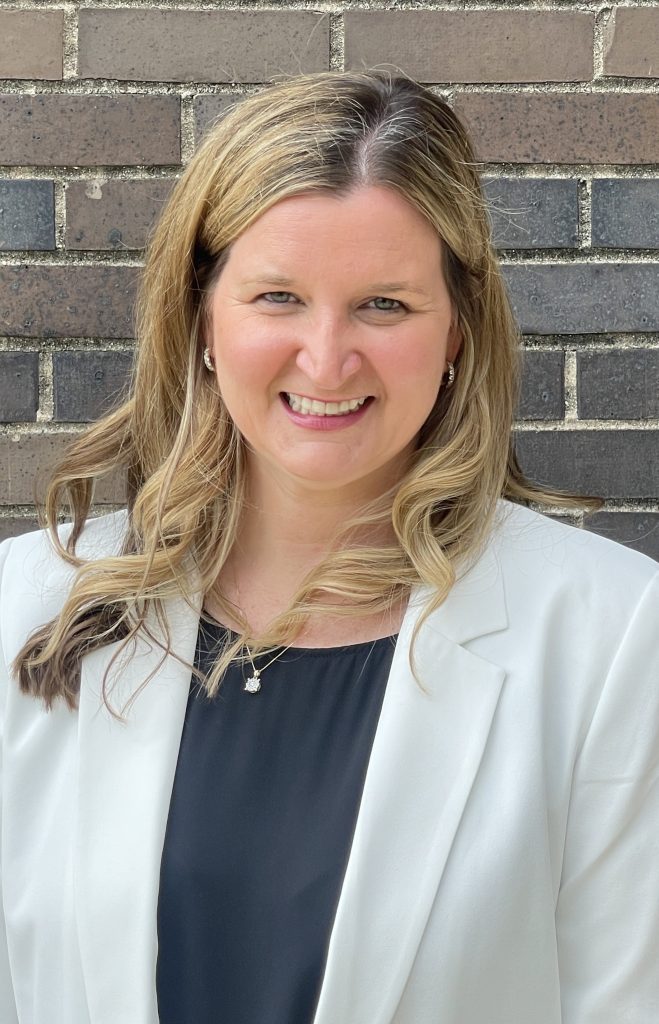
District 230 names Director of Safety and Security
Spread the loveFrom staff reports The Consolidated High School District 230 Board of Education approved Dr. Mary Pat Carr as the district’s first Director of Security. She will move from her current position as Assistant Principal of Activities at Stagg High School to the Administrative Center on July 1. Her duties as Director of Safety…

Worth Public Library kicks off summer reading program
Spread the loveBy Kelly White Patrons at the Worth Public Library welcomed in the summer season earlier this month. The library, 6917 W. 111th St., hosted its annual celebration on June 1 to bring patrons of all ages out to sign up for its summer reading program. “We love any excuse to celebrate reading with…
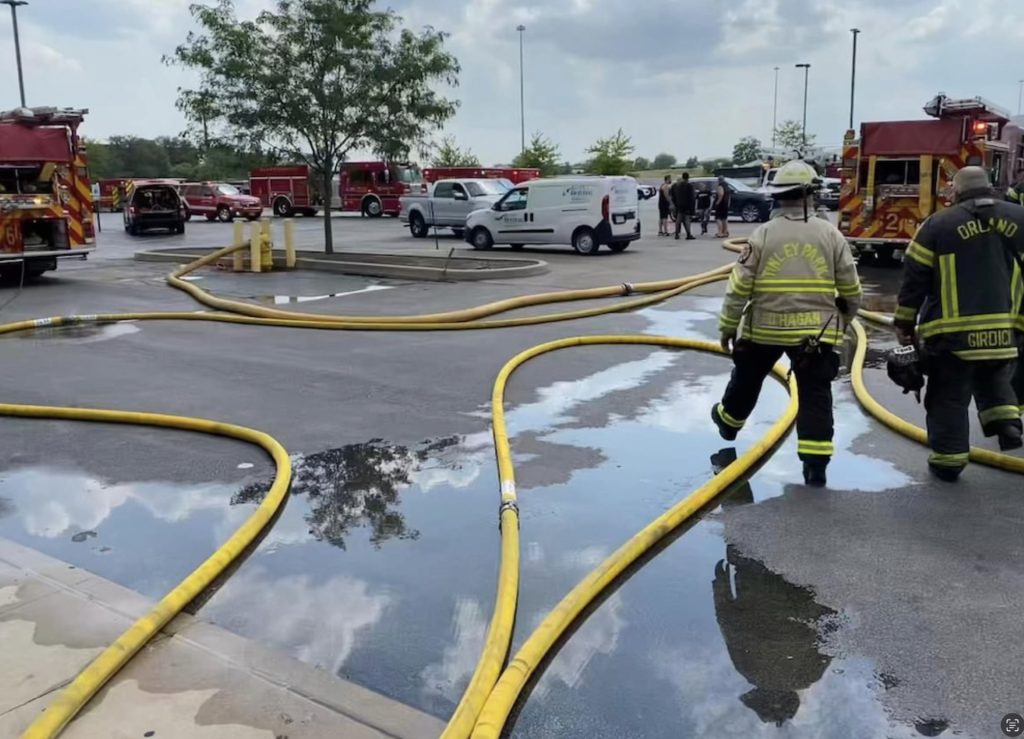
Fire knocks out Orland’s UFC Gym
Spread the loveFrom staff reports A fire last Thursday afternoon practically destroyed an Orland Park gym and knocked out neighboring businesses, as well. Orland Park firefighters received a call at 2:31 p.m. June 20 for a reported fire in the UFC Gym located at 66 Orland Square Drive Unit C. Multiple 911 calls were received for a…
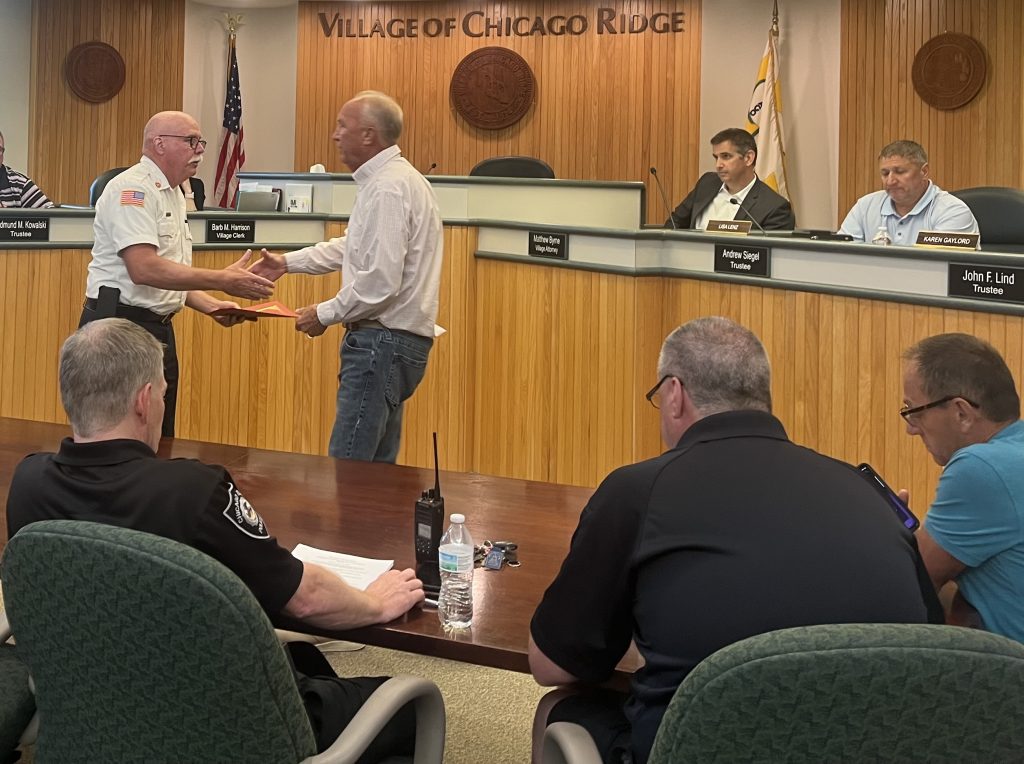
Chicago Ridge Fire Chief Bonnar retires
Spread the loveStarted his 50-year career as Orland Park cadet By Dermot Connolly Chicago Ridge Fire Chief William Bonnar officially announced his retirement from a nearly 50-year career at the June 18 Village Board meeting. Mayor Jack Lind made the announcement “with great regret,” joking that “he doesn’t have the age to retire but he…

Stagg tabs Allee Hernandez to guide girls hoops
Spread the loveBy Randy Whalen Correspondent Allee Hernandez has accrued many years of basketball experience as a player and as an assistant coach. She will soon embark on a new experience as a head coach at Stagg, where she will be the Chargers first new head coach in 16 seasons. She succeeds Bill Turner, who…

Shepard’s yearbook wins national recognition
Spread the loveBy Kelly White Shepard High School students have worked tirelessly to create a yearbook for this academic year that was nationally recognized. The high school, 13049 S. Ridgeland Ave. in Palos Heights, was chosen as a Yearbook Excellence Contest recipient from Walsworth Publishing Company, a family-owned printing company based out of Marceline, Missouri.…

Hickory Hills man charged in grandfather’s murder
Spread the loveBy Nuha Abdessalam A 32-year-old Hickory Hills man has been charged with first-degree murder in the June 21 death of his 90-year-old grandfather. Dean J. Faulk was charged on June 22 with the June 21 murder of Dean L. Faulk. Police said they responded to a call at 9:45 a.m. June 21 at…

Orland Park Public Library kicks off summer
Spread the loveBy Kelly White Summer is nearly here and the Orland Park Public Library is ready for it. On June 8, the library, 14921 S. Ravinia Ave., hosted its second annual Summer Reading Challenge Kick-Off event themed, Read, Renew, Repeat. “There are multiple interpretations to this theme,” Jackie Boyd, Communications Manager at the Orland…
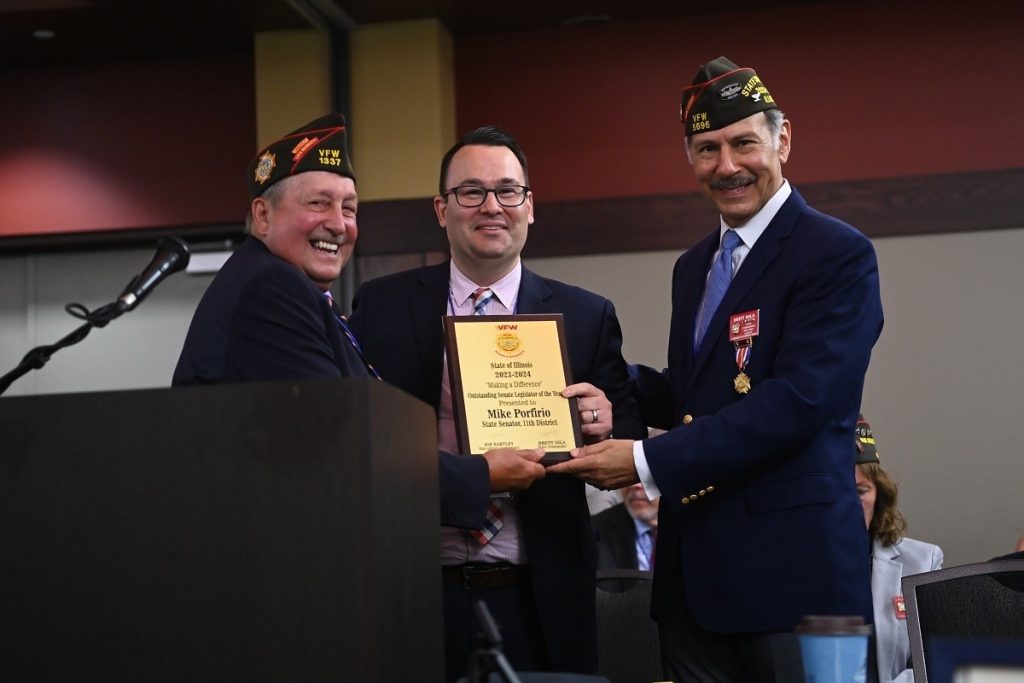
llinois VFW names Porfirio Senator of the Year
Spread the loveIllinois Veterans of Foreign Wars recently selected state Senator Mike Porfirio as the Senator of the Year. “I’m deeply honored to receive this prestigious award from the Illinois VFW,” said Porfirio (D-Lyons Township). “I am committed to ensuring our veterans receive the protections, care and dignity they deserve. This recognition is a testament…
Neighbors
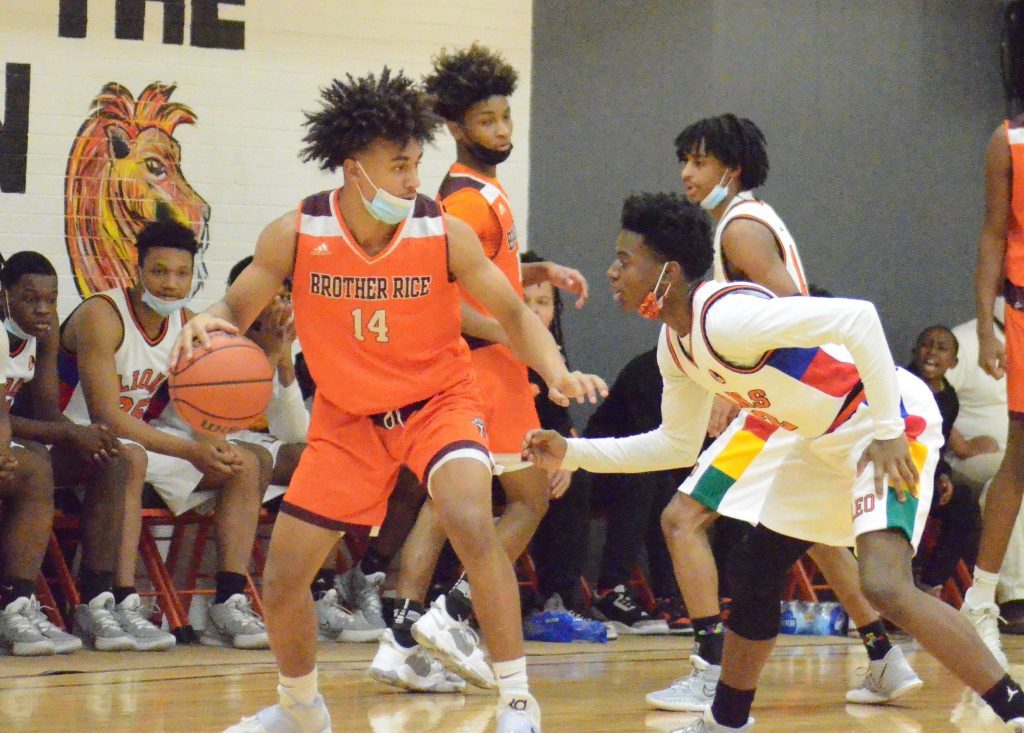
Brother Rice’s 11-game win streak ends with loss to Leo
Spread the loveBy Jeff Vorva Staff writer In seemingly a blink of an eye, Brother Rice picked up as many losses as it had all season. The Crusaders headed into last weekend’s action with a 21-2 record and was 10-0 in the Chicago Catholic League Blue. But Friday night, they suffered a 56-50 setback to…

Area Sports Roundup: Six area girls bowling teams headed to sectionals
Spread the loveBy Jeff Vorva Staff writer Six area girls bowling teams are headed to sectionals. Reavis and Stagg won IHSA regional titles last Saturday, and four other teams have advanced to this weekend’s action. Reavis won its own regional at Palos Lanes in Palos Hills with a 5,378 in six games, well ahead of…

Marist cheerleaders takes 2nd in state
Spread the loveBy Jeff Vorva Staff writer After Marist’s cheerleaders watched a video of their state finals performance on Feb. 5, there were some long faces and tears as the girls filed out of the video room and into the cooling-off room. After a long meeting, there were more long faces. “I’ve had better days,”…

Oak Lawn-Hometown Middle School packs meals for needy during holidays
Spread the loveBy Kelly White Wishing everyone to have the best holiday season, Oak Lawn-Hometown Middle School students packed meals for those in need before they went on Christmas break. The school, 5345 W. 99th St., Oak Lawn, hosted its annual Feed6 Meal Packaging event on December 4, where students gathered together, while socially distanced, with…

McCord shows off Stagg student artworks
Spread the loveBy Kelly White Stagg High School art students proudly had their work showcased at a local gallery. McCord Gallery & Cultural Center, 9602 W. Creek Road, Palos Park, featured the art of Stagg’s most creative until January 28. “Having my work as part of an art show in an art gallery like McCord is significant to…
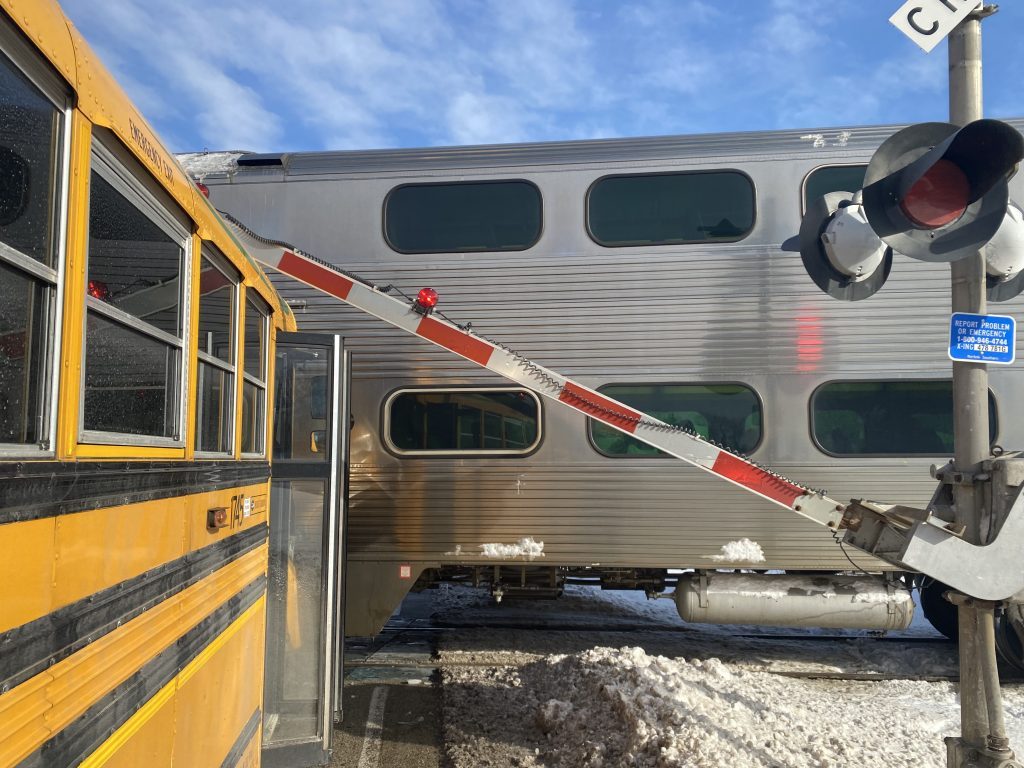
No injuries when Metra train hits school bus in Orland Park
Spread the loveBy Bob Bong No children were injured Friday afternoon when their school bus stalled on railroad tracks in Orland Park and the bus was hit by a Metra commuter train. The Orland Fire Protection District responded to an emergency call Friday when a school bus from American School Bus Co. carrying students from…

Charge West Lawn man in 47th St. slaying
Spread the loveBy Tim Hadac An 18-year West Lawn man has been charged with murder in connection with the June 11 slaying of a 20-year-old woman in the 4700 block of South Rockwell. Dilan E. Ugalde, of the 3600 block of West 62nd Place, was apprehended by members of the Chicago Police Department and the Great Lakes Regional…

Charge 2 in Ford City carjacking
Spread the loveBy Tim Hadac A 19-year-old man and a 15-year-old boy have been charged with aggravated vehicular hijacking in connection with a crime that occurred in a Ford City parking lot at about 8:45 a.m. Thursday, Jan. 27. Travell Barnes, 19, of the 6800 block of South Hermitage, and the boy allegedly took a…

Police reports
Spread the loveMan shot to death in Chicago Lawn A 23-year-old man was shot in the back of the head and killed in a crime that occurred in the 6400 block of South St. Louis at about 1 a.m. Saturday, Jan. 30. Officers responding to a “person down” call discovered the victim lying on the…







